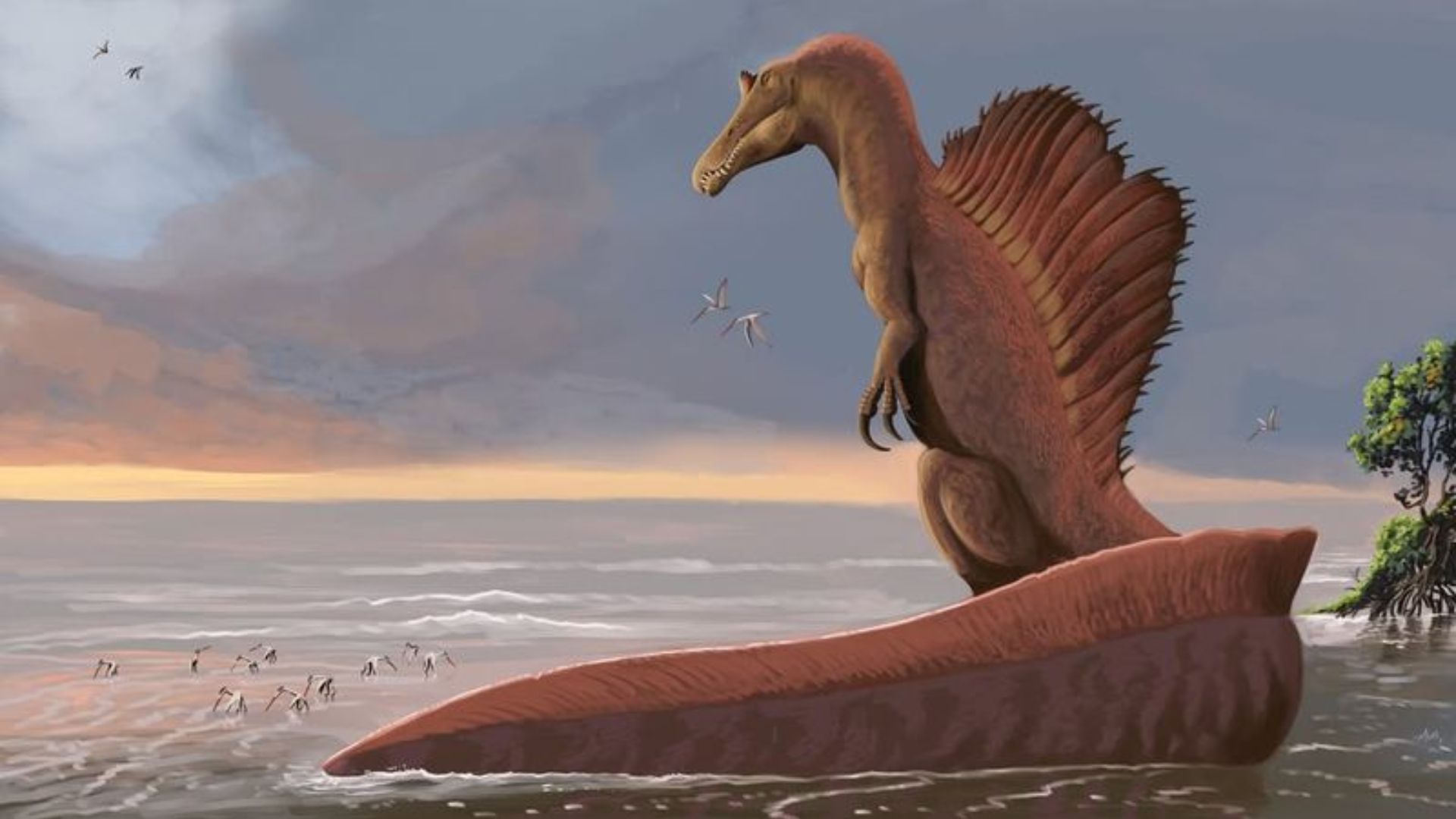The Tyrannosaurus Rex, often celebrated as the ultimate dinosaur predator, wasn’t without competition. Prehistoric Earth was teeming with formidable creatures, some just as powerful, and others even capable of defeating the mighty T-Rex.
With razor-sharp teeth, immense power, and clever survival instincts, these ancient beasts dominated their territories and challenged the T-Rex’s reign.
Join us as we dive into the fascinating world of prehistoric predators whose strength, size, and strategies made them worthy rivals to the king of dinosaurs.
1. Carcharodontosaurus
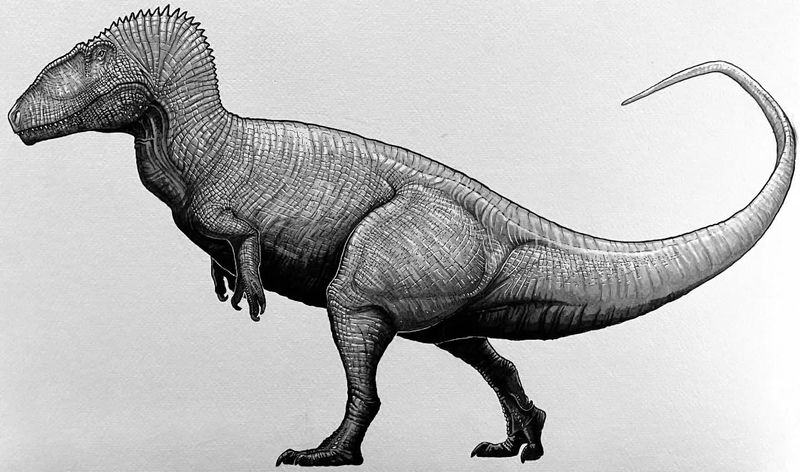
Carcharodontosaurus, often compared to the T-Rex, was a massive carnivorous dinosaur that roamed the Earth during the late Cretaceous period. Known for its serrated teeth, which resembled those of a great white shark, this beast was a formidable predator.
Imagine a creature towering over its prey, with jaws designed to slice through flesh effortlessly. Its size and strength allowed it to take on large herbivores and even challenge the likes of the T-Rex in territorial disputes.
The landscape of North Africa, where Carcharodontosaurus once prowled, was a thriving ecosystem filled with potential prey. Its strategic mind and hunting prowess made it a feared opponent. Able to run at impressive speeds, it could swiftly close in on its targets, ensuring they had little chance of escape.
While the T-Rex often gets the limelight, Carcharodontosaurus was no less impressive. Its presence in the prehistoric world serves as a reminder of the diverse and dangerous creatures that existed millions of years ago, each playing a unique role in the complex web of life.
2. Spinosaurus
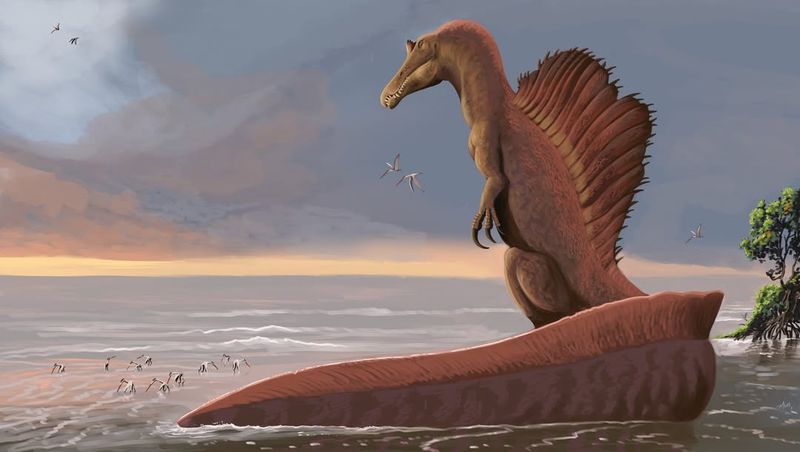
Spinosaurus is one of the most unique predators that could take on the T-Rex not just for its size but also its distinctive hunting abilities. Unlike its more well-known counterpart, the T-Rex, Spinosaurus was semi-aquatic.
It thrived in both water and land environments, showcasing an evolutionary adaptation that allowed it to hunt fish as well as land-dwelling creatures. Its elongated snout and conical teeth were perfectly suited for gripping slippery prey. This dinosaur’s most striking feature was its sail-like structure on its back.
This sail may have been used for multiple purposes, such as thermoregulation or attracting mates. Spinosaurus’s adaptations gave it an edge in different terrains, making it a versatile and dangerous predator of its time.
As it roamed the swamps and riverbanks of what is now North Africa, Spinosaurus carved out a niche that made it a dominant force against the mighty T-Rex.
Its ability to exploit aquatic resources allowed it to survive in environments where other predators might struggle, marking its place in history as a powerful and adaptable dinosaur.
3. Giganotosaurus
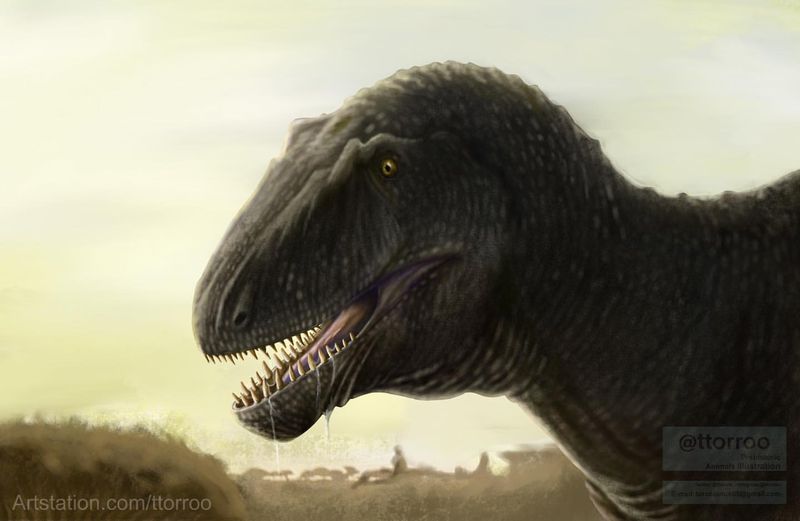
Giganotosaurus, a true giant of the theropod family, was one of the largest terrestrial carnivores to ever walk the Earth. It roamed the lush landscapes of late Cretaceous South America, a region teeming with life and diversity.
This dinosaur’s incredible size and power made it a worthy match for the T-Rex, often leading to speculation about hypothetical battles between the two.
Armed with a mouthful of sharp, dagger-like teeth, Giganotosaurus could take down massive herbivores that shared its habitat. Its long, muscular legs allowed it to cover ground quickly, making it a relentless hunter.
The dense forests provided ample cover for ambushes and surprise attacks on unsuspecting prey. Giganotosaurus’s sheer strength and strategic hunting techniques made it a dominant predator, instilling fear in the hearts of other creatures that crossed its path.
Its existence speaks volumes about the incredible diversity and adaptations of prehistoric life, challenging the T-Rex’s title as the ultimate predator.
4. Allosaurus
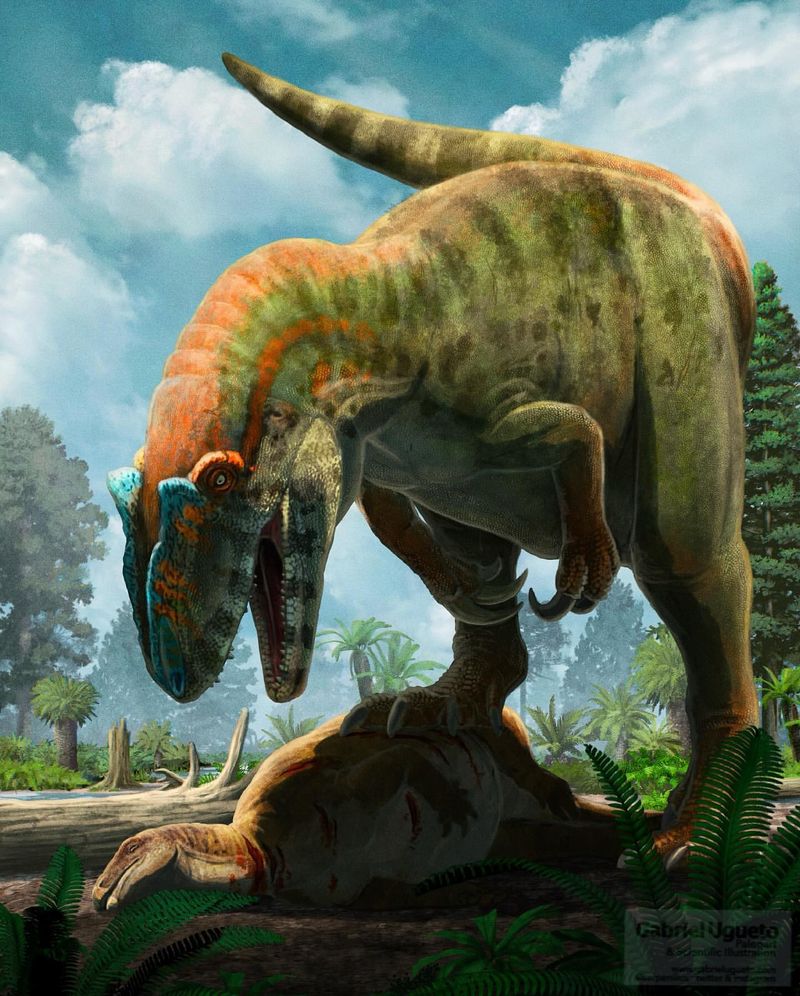
Allosaurus, a prominent predator of the Jurassic period, was a fierce competitor long before the reign of the T-Rex. Found primarily in North America, this bipedal carnivore was known for its strong legs and large skull equipped with sharp teeth.
Unlike the T-Rex, which had relatively tiny arms, Allosaurus possessed sizable forelimbs with large claws, useful for gripping prey.
One of Allosaurus’s notable hunting strategies was its potential ability to hunt in packs, a behavior that would have increased its success rate in taking down large, cumbersome herbivores. This social hunting tactic would have allowed it to compete with other apex predators of its time.
Though separated by millions of years from the T-Rex, the Allosaurus demonstrated behaviors and physical attributes that made it a fearsome predator in its own right.
Its legacy in the prehistoric world is marked by its adaptability and predatory skills, aspects that would have posed a significant challenge to any rival, including the T-Rex.
5. Deinonychus
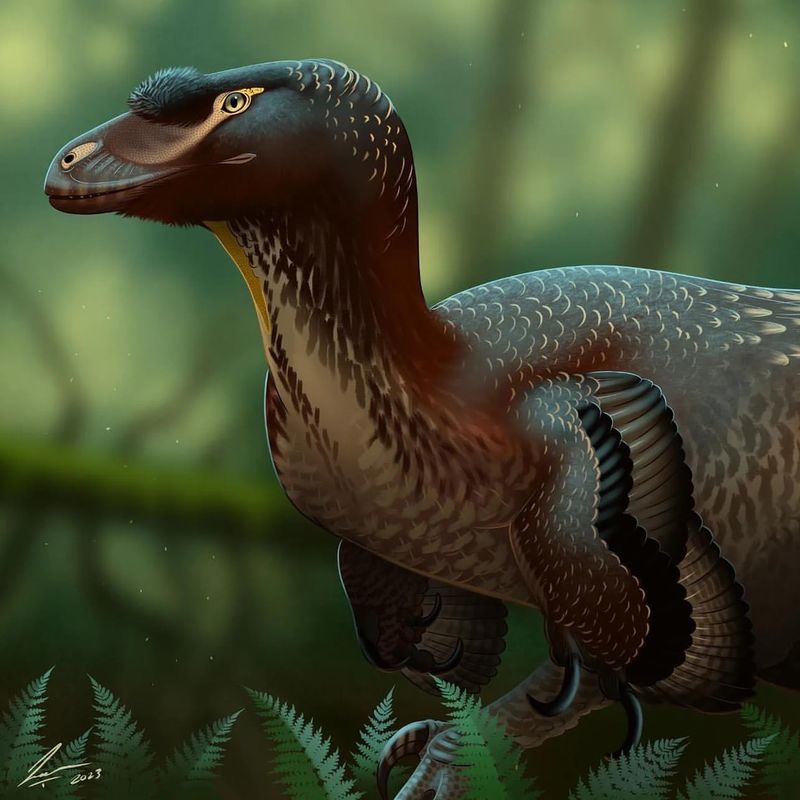
Deinonychus may not have matched the T-Rex in size, but its fierce nature and intelligence made it a formidable adversary. Known for its sickle-shaped claws and agile movements, this dinosaur was a master of speed and strategy.
It often hunted in packs, using coordinated attacks to bring down prey much larger than itself. The Deinonychus thrived in the Early Cretaceous period, primarily in what is now North America. Its sharp, serrated teeth and keen senses made it an efficient hunter.
The pack hunting behavior allowed it to take advantage of group tactics, overwhelming prey through sheer numbers and precise attacks.
Though smaller than many of its contemporaries, Deinonychus’s intelligence and cooperative hunting methods made it a notable predator.
Its presence in prehistoric ecosystems highlights the importance of strategy and teamwork in the survival of species, offering a unique contrast to the solitary hunting style of the T-Rex.
6. Megaraptor
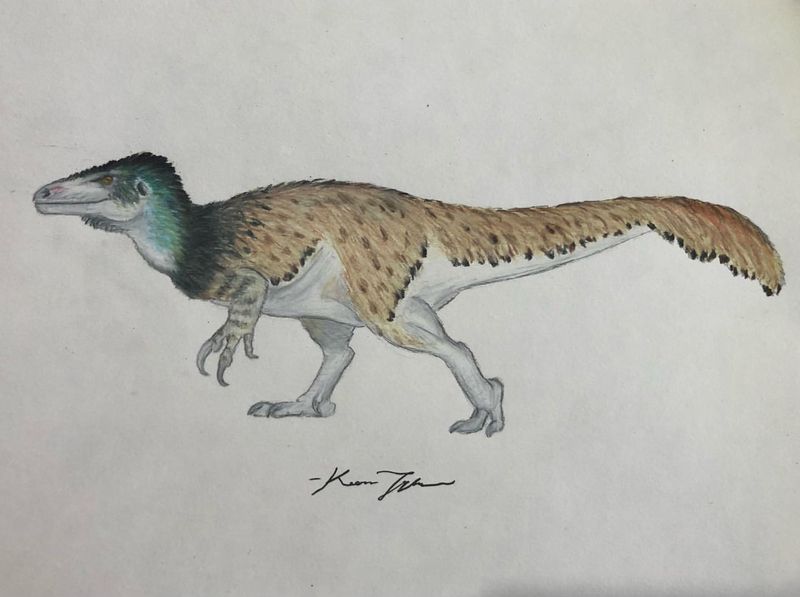
Megaraptor, a predator that roamed the Earth during the late Cretaceous period, was renowned for its agility and distinctive hunting tools.
Unlike many of its larger cousins, Megaraptor was built for speed, with long legs and a lightweight body that allowed it to move swiftly through its jungle habitat. This dinosaur’s most formidable weapon was its elongated claws, which it used to grip and slash at its prey.
The claws were not only intimidating but also instrumental in subduing animals that it pursued. Its keen senses and quick reflexes made it a highly successful hunter, able to adapt to various challenges in its environment.
Megaraptor’s ability to strike rapidly and retreat when necessary gave it an edge over larger, slower predators like the T-Rex.
The combination of speed, precision, and formidable claws ensured its place as a lethal force in the prehistoric world, showcasing the diversity of predatory adaptations beyond raw power alone.
7. Tarbosaurus
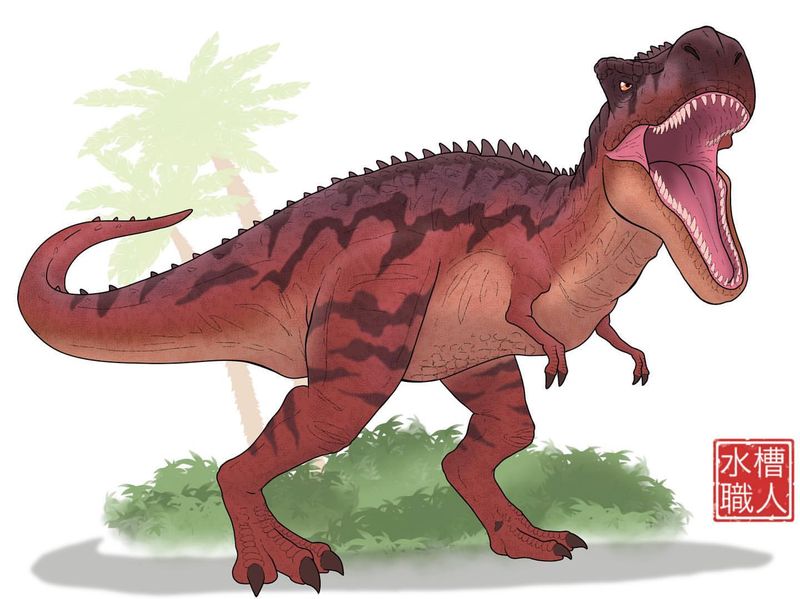
Tarbosaurus, often considered the Asian counterpart to the T-Rex, shared many physical attributes with its more famous relative. This large carnivorous dinosaur roamed the landscapes of what is now Mongolia, during the late Cretaceous period.
With a massive skull and powerful jaws, it was well-equipped to take down large prey. While similar in appearance to the T-Rex, Tarbosaurus was slightly smaller.
However, this did not diminish its prowess as a top predator in its ecosystem. It thrived in a diverse environment, preying on everything from hadrosaurs to smaller dinosaurs that wandered into its territory.
Tarbosaurus’s existence in the prehistoric world offers a fascinating glimpse into the evolutionary paths of tyrannosaurids.
Its ability to dominate its habitat despite the presence of other formidable predators highlights its adaptability and strength, qualities that would have made it a worthy opponent to the T-Rex in any hypothetical confrontation.
8. Ceratosaurus
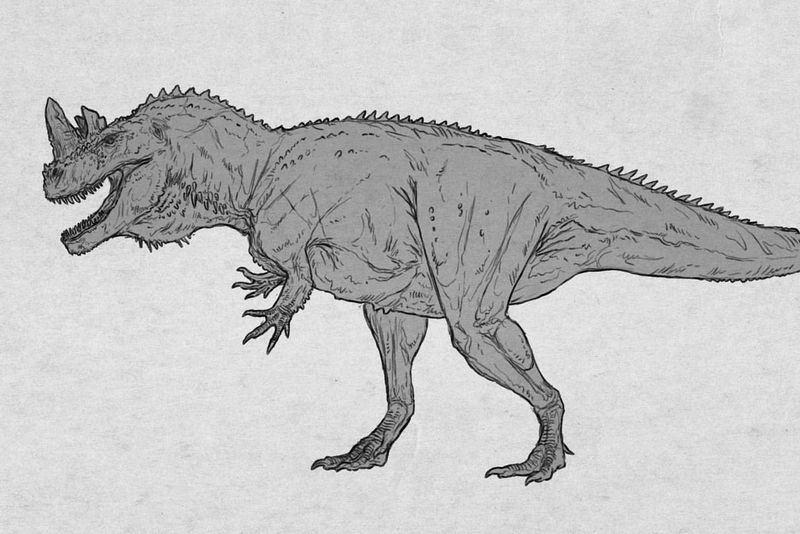
Ceratosaurus, with its distinctive nasal horn and robust build, was a unique predator from the Jurassic period. This medium-sized theropod was known for its agility and versatile hunting skills, enabling it to thrive in diverse environments, from dense forests to open plains.
Its horn, while not as large as its other features, may have played a role in mating displays or as a weapon in combat with rivals. Ceratosaurus’s strong legs and tail provided balance and speed, allowing it to pursue a wide range of prey, including fish and smaller dinosaurs.
The combination of physical adaptations and strategic cunning made Ceratosaurus a successful hunter. Its presence in the prehistoric ecosystem contributed to the complex food webs of its time, demonstrating the variety of niches that different predators could occupy.
Though it lived long before the T-Rex, its predatory skills and unique features make it a noteworthy study in the evolution of dinosaurian life.
9. Camarasaurus
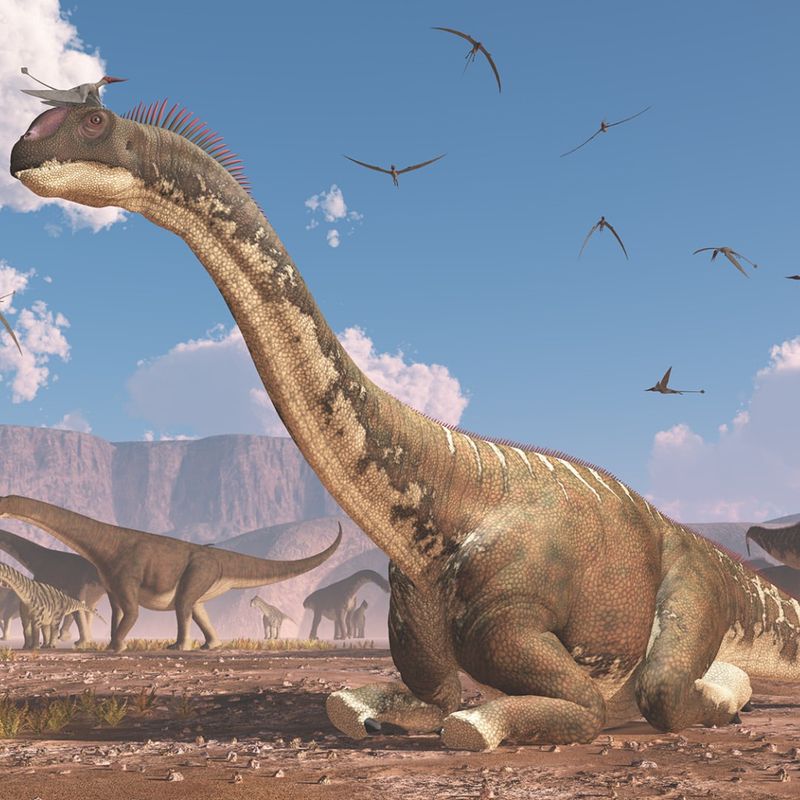
Camarasaurus, while primarily known as a herbivore, played a significant role in its ecosystem that indirectly challenged predators like the T-Rex.
This large sauropod dinosaur, featuring an elongated neck and massive body, thrived in the late Jurassic period across North America. Though not a predator itself, Camarasaurus’s sheer size and strength provided it with natural defenses against carnivorous threats.
When threatened, it could use its powerful tail as a whip, deterring predators from attacking. Its social behavior, often moving in herds, added a layer of protection, making it difficult for solitary predators to single out individuals.
Camarasaurus’s ability to withstand predatory threats showcases the diverse survival strategies that existed in prehistoric times. Its presence in the ecosystem contributed to the balance of predator-prey dynamics, highlighting the interconnectedness of life during the age of dinosaurs.
10. Therizinosaurus
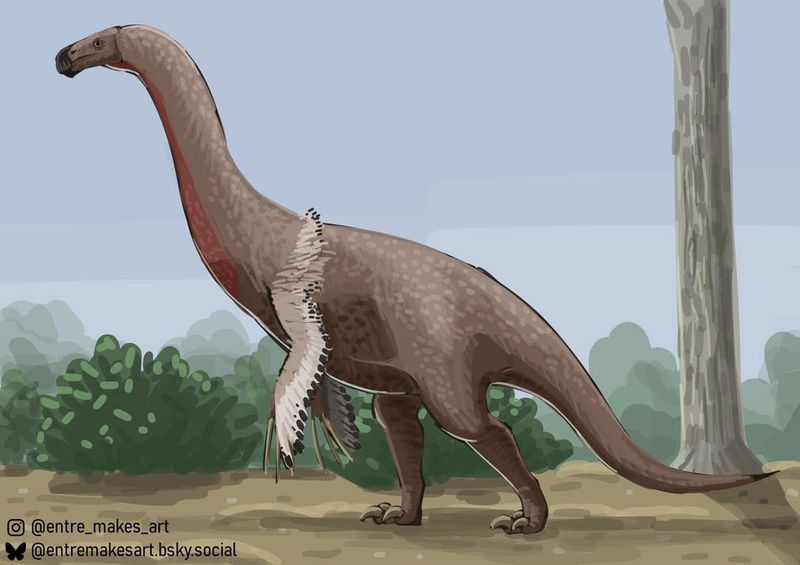
Therizinosaurus, one of the more bizarre dinosaurs, stood out due to its enormous claws and herbivorous diet. Residing in the late Cretaceous period, it roamed the forests of what is now Asia.
Though not a predator, its intimidating claws served as a defensive tool against potential threats, including formidable predators like the T-Rex.
These claws, which could reach lengths of up to a meter, were likely used to pull down branches and strip leaves, but they also presented a formidable deterrent to attackers. Its large body and long arms provided it with both reach and strength, making it a difficult target for carnivorous dinosaurs.
The unique adaptations of Therizinosaurus illustrate the diverse evolutionary paths taken by dinosaurs. By using its claws defensively, it maintained its place within the complex food web of its time.
This creature’s ability to deter predators through sheer intimidation highlights a different kind of strength in the prehistoric world.

